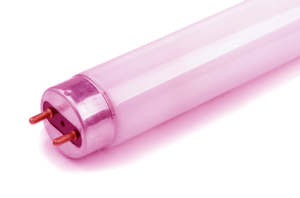
If you often leave your workplace feeling drained, achey and irritable, it may be more than your coworkers getting to you. According to research, our nation’s attempt to be energy efficient, the health of millions may be at stake. Low energy fluorescent lighting is common in public facilities and office buildings and according to some experts, is nothing short of toxic.
Fluorescent Bulb Dangers
Fluorescent bulbs can be encapsulated or open. If you spend more than one hour a day close to a fluorescent bulb that is not housed in protective glass, you put yourself at a risk of possible skin cancer. Fluorescent bulbs also contain mercury and a broken bulb is considered hazardous waste not fitting for regular trash. In fact, if a bulb breaks, mercury is released into the air and can cause a host of health problems including muscle degradation, tremors, weakness and headaches. Mercury also interferes with the nervous system and cognitive function.
The Environmental Protection Agency recommends a sixteen step clean up process for a broken lightbulb that includes opening windows and wearing rubber gloves. Broken lights are not the only problem with fluorescent lighting. Some people actually suffer from something called ElectroHyperSensitivity. According to the World Health Organization, people who are hypersensitive to even enclosed fluorescent lighting may suffer from chronic pain and fatigue, have difficulty in focusing, experience memory loss, skin problems and respiratory problems.
Electromagnetic radiation can also affect circulatory, digestive and respiratory systems. Schools in California have reported behavioral problems and cancer clusters in areas where high efficiency fluorescent bulbs have been used.
Light Studies
An International group of European scientists have compiled data from studies on the health effects of fluorescent lighting. One report noted that fluorescent lighting in the workplace doubled the risk of malignant melanomas in women and increased the risk for men. Other studies have noted a decrease in cognitive performance, increased stress, and even stunted growth of school children.
 How to Cope
How to Cope
If you work in an office with fluorescent lights there are a few things you can do to deal with the negative impacts. If you have the ability, turn off your overhead light and bring in a few desk lights with full spectrum bulbs to light up your space. You can also sit as close as possible to a window. The natural sunlight will help to mitigate the impact of the fluorescent light. You can even wear light-colored sunglasses to reduce the glare associated with fluorescent bulbs, if you don’t mind being the topic of office conversation.
Full-Spectrum Lighting
While the sun is the only true source of full-spectrum light, you can replace traditional lights with full-spectrum bulbs. Full-spectrum light bulbs provide illumination that is similar to natural light.
Recent research claims that natural full-spectrum lighting can increase concentration and productivity. One study done on students in California states that students who took standardized tests in rooms lit with natural light did at least 26% better than students in rooms with artificial light. Manufacturers of full-spectrum lighting claim that it will improve moods and performance as well. However, more research is still needed to investigate the true benefits of this type of lighting.
For now, the more natural the light the better. If you can switch off the light and let the sun shine in, this is your best and healthiest option.
– The Alternative Daily

